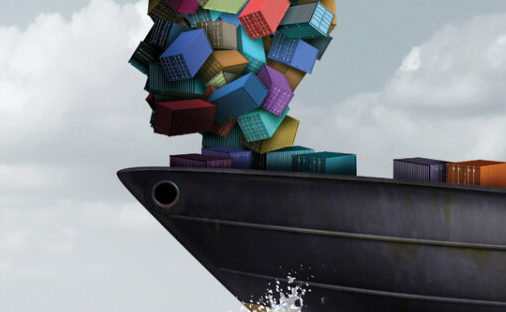
You’ve probably heard many reasons for the slowdown in the supply chain, including scarcity of containers, insufficient workers and not enough raw goods for manufacturing. If you’ve been experiencing these symptoms of supply chain breakdown, understanding the underlying conditions causing them will assist you in your business-planning needs — and will let you know that there is light at the end of the tunnel.
Let’s begin with a big issue being ignored by most people: the energy crisis in China. China has committed to cutting its carbon emissions, and this year implemented a dual-control plan to reduce energy intensity and to limit total energy consumption. As of the third quarter of 2021, however, 20 provinces were not in compliance with one of the two dual-control factors. In addition, China is the No. 1 coal consumer in the world, but overuse of coal has shortened supplies and raised grave concern over whether there will be enough coal to supply consumers and businesses through the winter. Power grid failures have caused plants to lose power in the middle of manufacturing, in some instances losing 20-30% of production a day. All these energy issues equate to higher prices for raw and manufactured goods.
Fortunately, once China balances its energy issues enough to stabilize manufacturing through the winter, we should see some short-term relief during the end of the first quarter and beginning of the second quarter of 2022. I would expect to continue seeing higher manufacturing prices out of China while the country invests in infrastructure to update its power grid and meet its commitments on carbon neutrality, but we can hope for long-term relief farther down the road, once a major overhaul leads to the reduction China is looking for in carbon emissions.
Now let’s discuss shipping issues. We’re seeing higher-than-normal increases, even for the holiday season. If you need air shipping out of China, companies are adding surcharges that can be up to $1-$2 per pound. I regularly import from China, and as a rule of thumb, this can typically include a $1-per-item charge for air shipping based on our shipments, though this varies according to the specs of what you order. Orders placed at the beginning of November 2021 saw a 400% increase in shipping, averaging $4 per item shipped. This trickles down.
The increased cost of goods must be passed to the end consumer if you hope to keep your doors open. I started with air shipping increases because it’s the only way you’re getting anything from China prior to the holidays. FYI, DHL’s air service out of China allows a package to arrive at your door within three to five business days.
Container shipping is also having multiple issues. It typically takes 60 days to get a container from China to a U.S. port, especially on the East Coast, and now we’re seeing upwards of 90 days. That said, the container with holiday goodies had to leave China by late July or early August if you wanted them in stores in early November — and that’s only if the goods come off the ship ready to distribute. If you need raw goods for manufacturing, you must add your production time to ensure enough time to manufacture, brand and distribute. While many folks are not manufacturing their own products, this information sheds light on what branding partners are going through while working to put products on your shelves. I think we’ll see a slower recovery on shipping due to the nature of the business.
Lastly, and perhaps the hardest to talk about and acknowledge, is the loss of life during the pandemic. We know that the pandemic is wreaking havoc on many people’s lives, but no one is discussing the effect this has on industry and supply chain management. I don’t have all of China’s numbers for deaths by age, but in the U.S. we’ve seen approximately 171,000 people between the ages of 18 and 64 pass away from COVID-19. That number represents working-age people. It represents wage-earners and those that they support. That number also doesn’t include those who got better but were out on leave for an extended time, those taking care of a loved one or all the other ancillary reasons the pandemic may have removed workers from their positions. This has a great impact on the cost of goods and the overall supply chain. It’s also the impact it takes longest to recover from.
I hope this explanation around energy, shipping and workers helps with understanding and empathy regarding the overall condition of the supply chain. Having a good understanding of this allows you to make more informed decisions about your future endeavors. Each of these issues will have a different timeline for easing up the pressure on our market. The comforting part is that they do all look to have a timeline for easing up. We just need to stay steady in our progress and make it to the goal line.
